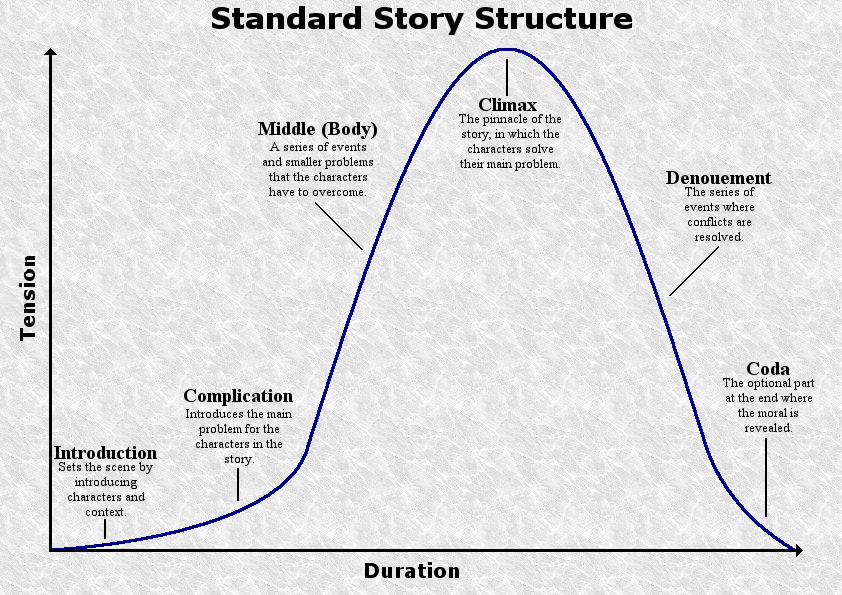Embracing Structural Limitations
When you look at the three act structure it appears to be quite limiting to your writing. While that is true, those same limitations can be a great help to you, especially if you are new to scriptwriting.
These limitations basically hold your hand through the storytelling process and provide great structure even for those who have never written before in their life. The three act structure is like a paint-by-numbers kit for scriptwriters. The difference is that even though you’re following a set structure you still have plenty of room to stamp your own mark on your story. Writing is obviously a highly creative process but those limitations, which some scriptwriters complain about, help reign you in and turn out at least a solid story which viewers can understand.
What Limits?
If you wish to use limitations to your advantage then you first need to understand exactly what those limits are. The first limit is also the most important, time. A feature length film generally lasts between 90 and 120 minutes (although, in more recent years, this seems to be expanding). Each page of a script equates to roughly 1 minutes. Therefore you have between 90 and 120 pages to work with.
Breaking Up Time
Lets say you’re planning to write a 90 minute comedy movie. To keep your story ticking along you want to keep scenes between 1 and 3 minutes long. On average that means your scenes will be 2 minutes long. A simple bit of division shows that means you will have around 45 scenes in your story.
In the planning stage of scriptwriting a lot of writers like to write out a brief description of each scene onto 3×5 cards. This really helps with keeping track of your story and character development.
Character Limitations
Even experienced script readers can have troubled keeping track of multiple main characters. That is why it’s a good idea to never have more that four main characters. Anymore than that and it’s really hard to fit in enough development to make them a worthwhile character.
A common way of making this work is to have one protagonist and one antagonist, each with a close friend or sidekick. Your main protagonist should appear in the vast majority of scenes, this limitation helps you from going off on too many side stories and subplots with minor characters.
Layout Limitations
If you’ve ever read a script before then you’ll know just how much empty “white space” there is. That’s because the best scriptwriters use words sparingly. Remember you’re not writing a novel, there’s no need for huge block of overly descriptive narrative or long winded monologues.
To make use of this, you might wish to follow the “Rule of 3”.
The Rule of 3
The “Rule of 3” is a simple limitation that you can put on yourself which will help keep your writing short and snappy. Basically you keep all blocks of dialogue to 3 lines or less, have no more than 3 characters in a scene, and a maximum of 3 subplots.
Now you know your limitations and how to use them your scriptwriting will improve immensely. I find there are four stages to learning anything with an element on creativity involved. When you start a new craft you try to do it by the book, it’s the only reference you really have after all. After you’ve gained a little experience you start getting frustrated by the restrictions and try to rewrite the book yourself. This experiment tends to lead to failure and a realisation that the book’s there for a reason, it works. Finally you learn what rules you should stick to stringently and which ones you can push the boundaries of.
Simply put: The more you write, the better you get.
Please CLICK HERE To Check Out My Top 5 Online Scriptwriting Courses




SS,You gave me such a laugh with this one! Now, if I were to read the tagline for a film that went A San Francisco pocile detective arrives at his married mistress’ house just as she shoots and kills her husband. Instead of arresting her, the detective loads the husband’s body into his car and dumps it. I would be pretty excited about seeing that film. Even if it were a tagline for a film out today. Too bad the tagline was the only interesting part of this fiasco! lolEven the title is stupid but it does make me smile! I immediately think Way, to phone in the title, way to get us interested in your little project. If only they had tried harder since it was a decent concept with potential.I really enjoyed your honest review of it without sugar coating anything. I’ve read so many reviews were the writers goes on about how great a film is and don’t miss it!’ when I’m sitting here saying.. No it wasn’t and no, Oh I plan to miss it! ha haHave a great weekend!Page